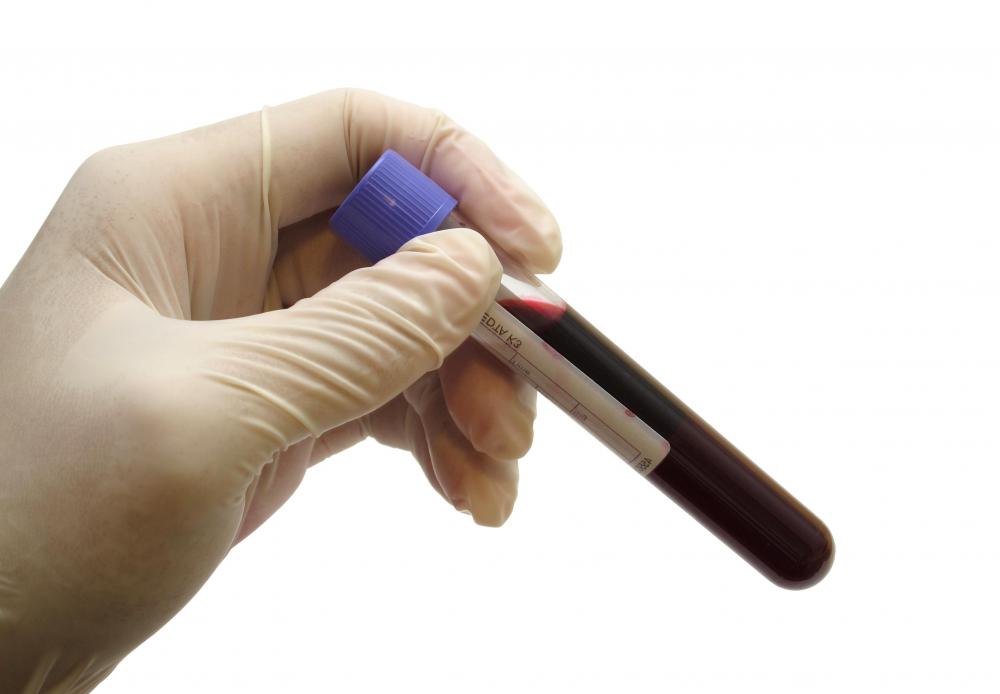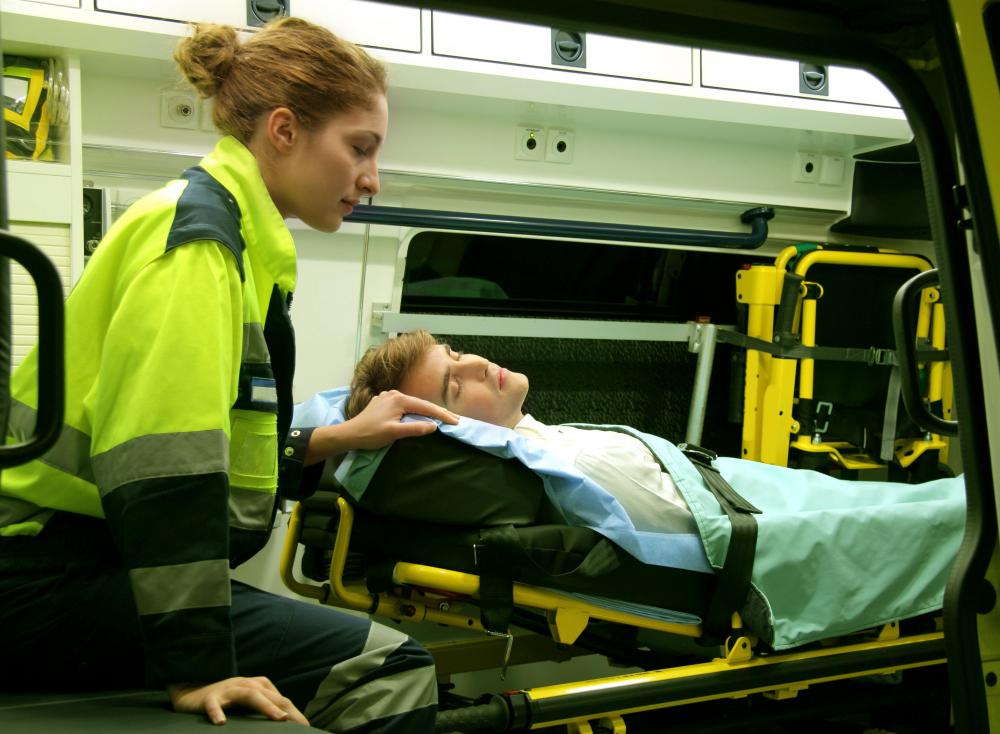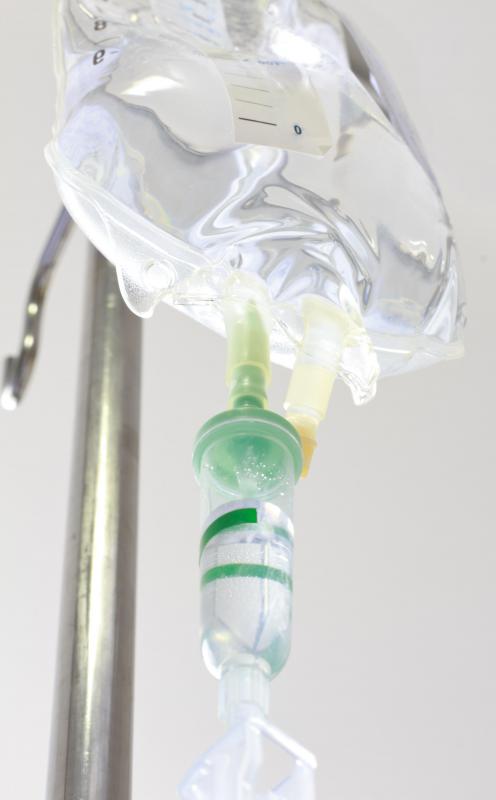At WiseGEEK, we're committed to delivering accurate, trustworthy information. Our expert-authored content is rigorously fact-checked and sourced from credible authorities. Discover how we uphold the highest standards in providing you with reliable knowledge.
What is Unfractionated Heparin?
Unfractionated heparin, also known as heparin, is an anticoagulant found in humans and many other animals. Produced by a type of white blood cell, the body stores unfractionated heparin until it is needed. Heparin and its synthetic derivatives are a staple of modern medicine used both in emergency situations and complex surgical procedures. Recent research into the compound suggests that its primary role is not coagulation but some other function.
In humans, white blood cells known as basophils produce unfractionated heparin. These white blood cells also produce histamine, a compound that increases blood flow during an allergic reaction. Basophils, though rare in the bloodstream, gather in large numbers at sites where allergens interfere with bodily functions. While traveling to and from allergic reactions, basophils deposit unfractionated heparin into mast cells. Mast cells make up the body's connective tissues and mucous membranes.

Stored in mast cells, the body releases unfractionated heparin to stop the blood coagulation that occurs after a cut. Though heparin stops the formation of new clots and the growth of existing ones, already formed clots are not affected by heparin's action. Even so, the presence of heparin at the coagulation site acts as a signal that the body can commence the process of clot breakdown once the cut fully heals. The process uses up heparin; basophils must produce more before the next bleeding event.

Unfractionated heparin and its synthetic derivatives are a lifesaving tool when used in emergency medical situations. A deep-vein thrombosis occurs when a clot forms in a deep vein. This condition, usually affecting the legs, reduces blood flow and can become fatal if the clot should break free and travel to the lungs. Intravenous heparin stops the clot from growing; physicians can remove the clot through many surgical and non-surgical procedures. Heparin is a valuable tool during complex medical procedures as well, preventing clots during open heart surgery.

Outside of directly treating patients, unfractionated heparin plays a large role in modern medical research. Companies that produce medical equipment coat some test tubes and capillary tubes with a heparin derivative so that a blood sample does not clot before a physician or other medical personnel can run tests. The internal components of a heart-lung machine have the same coating to prevent deadly clots from forming in the machine.

Ongoing research into unfractionated heparin suggests that heparin's primary function is not anticoagulation. The discovery of heparin in non-vertebrates came as a surprise to the scientific community, as these animals have blood coagulation systems dissimilar to that of humans. Though the scientific community has not yet reached a consensus, a common theory is that heparin exists primarily to fight of bacterial infection at cut sites.
AS FEATURED ON:
AS FEATURED ON:














Discuss this Article
Post your comments